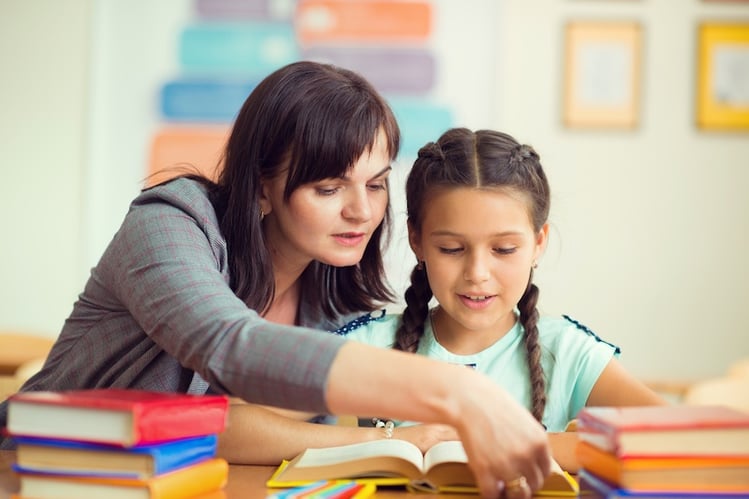
When teaching children who have learning disabilities, it's important to use methods that work best with their unique needs. If you are struggling to teach a student with dyslexia or you are a parent of a dyslexic child, here are some methods that may be worth checking out.
What Is Dyslexia?
Dyslexia is a learning disability that was identified over 130 years ago by German neurologist Adolph Kussmaul. The word "dyslexia' simply means "difficulty with words." Although many people associate dyslexia with the switching of letters in a word, it's a reading disorder that extends beyond simple letter conversion. Children who have this learning disability (LD) also have difficulty in recognizing characters, learning the sounds of letters and even identifying words that rhyme. As children get older, they may exhibit other signs of dyslexia, such as difficulty spelling and delayed language development.
Teaching Methods That Work
Luckily, there are many tried-and-true practices that teachers and parents can use to better support children with dyslexia.
The Orton–Gillingham Method
This popular method has long been used to teach children with dyslexia how to read. By focusing on the connection between letters and their sounds, children can assign more meaning to the language and develop better overall comprehension. It also uses a multisensory approach, which means that sight, sound, touch and movement all work in tandem when learning words.
The Structured Literacy Approach
This deliberate teaching method involves techniques such as clapping syllables to help the child better segment words into their components, or phonemes. It also focuses on connecting sounds to their symbols (letters) in two ways: visually, through reading, and auditorily, through spelling. This approach uses a systematic and cumulative progression of learning, meaning that lessons logically connect and build on each other.
A Compassionate Teacher
Finally, it's important to use compassion when approaching a child who struggles with dyslexia, since this condition has been shown to affect a child's self-esteem, confidence and mental health. Whatever method you choose to practice, be sure that you are cognizant of how you can increase the child's sense of self-worth. Praise them often for their hard work, don't put them on the spot in front of their peers, and give them the opportunity to answer questions aloud when possible.
What causes learning difficulties like Dyslexia?
For years, scientists thought that learning difficulties corresponded to specific areas of the brain. But this latest research suggests something entirely different.
In this study by Cambridge Brain Sciences, researchers discovered that no particular area of the brain caused learning difficulties. Instead, they found that weak connectivity between different regions of the brain may be the reason why some children struggle.
The study revealed that the brain is organized in hubs, like a transit system or a social network. Children who had well-connected brain hubs had either very specific cognitive difficulties, such as poor listening skills, or had no cognitive difficulties at all. By contrast, children with poorly connected hubs – like a transit station with few or poor connections – had widespread and severe cognitive problems.
"This study by Cambridge Brain Sciences gives us a deeper understanding of how the brain works -- through brain hubs and networks,” says Dr. Rebecca Jackson, Brain Balance Vice President of Programs and Outcomes. “Improving brain connectivity is the core focus of the Brain Balance program. This focus helps us to directly address the problem -- differences in brain connectivity -- rather than simply masking the symptoms that these kids experience.”
Driving brain connectivity to improve focus, cognition and learning can allow greater success for kids in the classroom and beyond.
How can the Brain Balance Program help?
The Brain Balance Program is a non-medical solution designed to help improve connections in the brain in a way that helps alleviate the symptoms kids and teens experience with dyslexia.
Extensive scientific research demonstrates that the brain is malleable, allowing for brain connectivity change and development and creating an opportunity for improvement. Brain Balance has applied this research to develop a program that focuses on building brain connectivity and improving the foundation of development, rather than masking or coping with symptoms.
If your child exhibits symptoms commonly associated with dyslexia, or your child has been diagnosed with dyslexia, the Brain Balance Program may be a great fit for your family. Take our online quiz to learn more!

To read more research behind the Brain Balance Program, visit the research and results of the program on the website.